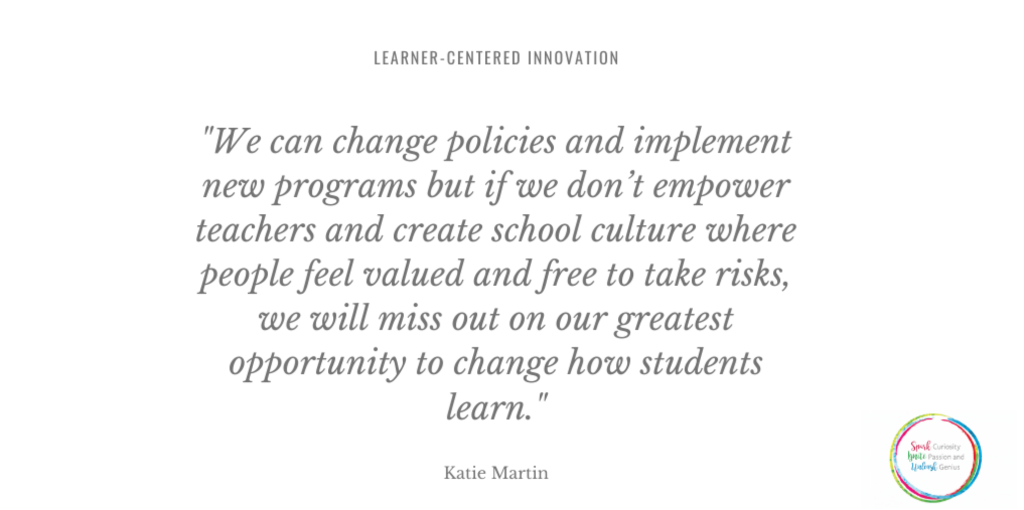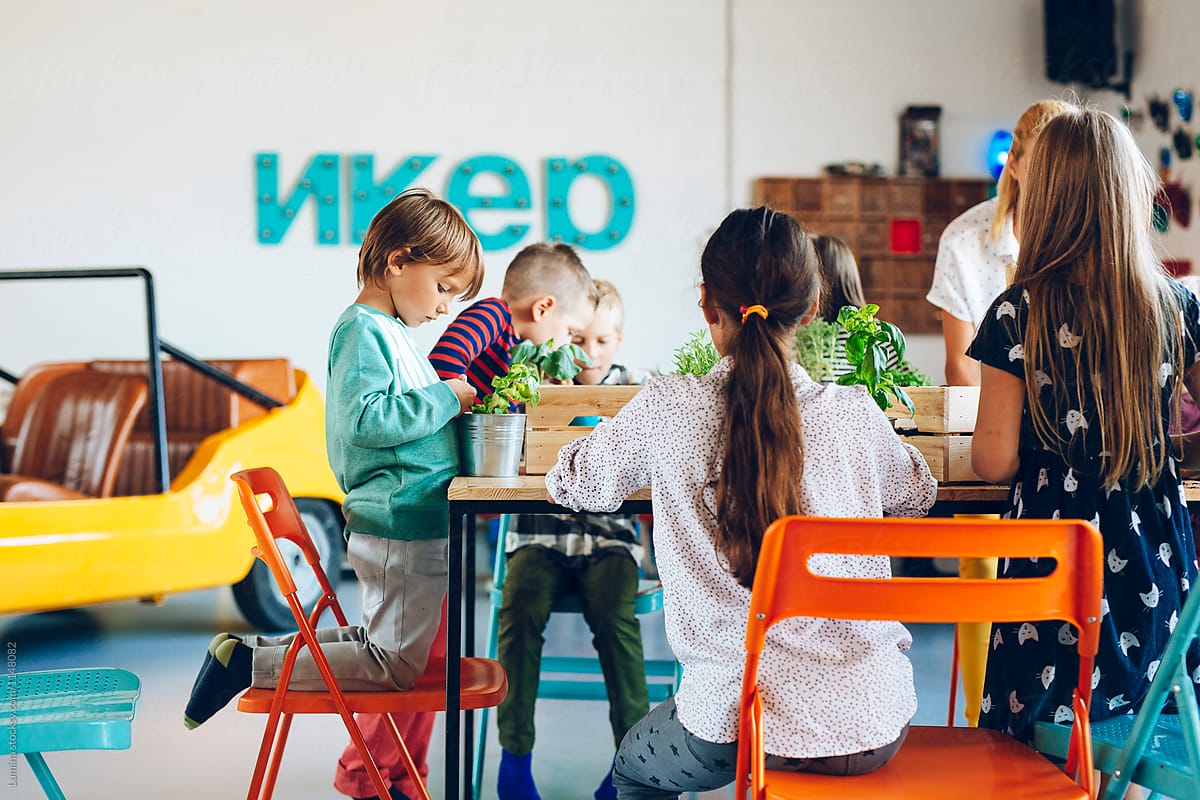When there are so many unknowns it can feel like we have more control when we try and standardize what people do. When we can quantify and measure it activity and behavior, it feels more real. But if we are honest this doesn’t work for many students in school and most certainly is not going to work for students and families when they are at home and the circumstances and support are as different as each and every child. Just because we can digitize worksheets and recreate a typical school day on Zoom, doesn’t mean we should.
The pandemic has only further exposed the pressing need for our educational system to evolve if we are serious about creating opportunities for each and every learner to thrive in a changing and unpredictable world. But as educators are working harder than ever I wonder if sometimes we are getting better at the wrong things. Our system was designed for a different era that was built on standardization and compliance and is not suited for the world we live in today, especially in the middle of a pandemic.
When I think of many of the challenges that we are facing in education right now, beyond sheer exhaustion and overwhelm, it seems to boil down to trust. Here are some examples:
- Teachers are required to be in buildings so we can make sure they are teaching.
- Teachers being micromanaged in a time when nothing is certain.
- Students are required to stay on Zoom so that we can ensure that teachers are students are “engaging for the 6 hour school day.”
- Students are required to turn on cameras so we can see they are paying attention.
These mandates can be traced back to a lack of trust and if we can’t build relationships and create a culture where people are extended trust and a little grace, we are not going to see the changes and innovation in education that are critical to sustain energy, efficacy, and joy. And, could we all use a little more joy right now?
What is a Core Factor in Transformational Change?
Trust. Yes, trust, not new programs or more fidelity or time on the screen is a core lever that leads to transformational change. In research-practice partnership with Altitude Learning and the University of California San Diego we sought to better understand and rigorously examine key levers for transformational change. Increases in student’s perception of their trust with leaders are associated with an average increase of 15% in all eight other areas that make up a student’s school experience.

Ultimately, if teachers trust their principals and students trust educators, there is a higher rating of the key levers of change and the overall school experience.
Four Key Ways To Build a Culture of Trust That Inspires Change
As a result of the Better Together research-practice partnership, we identified 4 key elements of Learner-Centered Innovation to create a culture of trust that empowers individuals to collectively work to improve access and opportunities for all learners: 1) Leverage Systems Thinking and Networks 2) Focus on Collective Intelligence 3) Personalize and Contextualize and 4) Co-Design Solutions.
1) Leverage Systems Thinking and Networks to Create a Shared Vision
Too often when we create change it is done in silos and fails to represent diverse voices and perspectives that can create more meaningful and lasting change. Peter Senge points out that the only vision people ever commit to is their own. Without ongoing conversation about their vision and what it means in your content, it’s impossible to build a shared vision across a community. By including teams from the central office and each school and seeking input from families and the community, we were able to better understand the system and work together to create trusting networks to catalyze the desired change.
2) Focus on Collective Intelligence
Nothing is more inspiring than working toward a common goal with people who share your passion and commitment. This collaboration among teachers from different schools and administrators created a contagious vibe that spurred creativity and innovation. We worked to define the desired goals, align learning experiences and enable conditions that we wanted to work towards. When schools and districts focus on compliance and mandates to implement programs and procedures, voice and choice are limited. On the other hand, like in Arcadia when you work to create an environment that honors the expertise and trusts educators, you can empower those in schools who are working with students every day so that they can make informed decisions based on the needs of learners.

3) Personalize and Contextualize
Based on the vision and the desired goals for learners, each school and educator was empowered to define specific areas of success and determine next steps that would move them forward. We spent a day as a team visiting each other’s classrooms and making our learning visible. This opportunity to learn and open up classrooms was built on the collective trust and allowed educators to see new and different practices. We supported teams to not just understand the vision but to take the ideas and practices we shared and explore what it looked like in different classrooms and contexts.
4) Co-Design Solutions to Create the Enabling Conditions for Change
The guiding coalition worked to make the vision and values explicit, found examples of what was possible throughout the district and beyond, and collaborated to identify barriers, challenges, and opportunities. Collectively this team was able to identify priorities that the district should focus on to further support the desired shifts in teaching and learning to continue to move toward the desired practices and meet the needs of each and every learner. This was possible because of the clear vision and a culture of trust to make choices based on the needs created a sense of agency and empowered educators to evolve their practices.
A New Way Forward
For our education system to evolve into one in which students take more meaningful action in their learning, they need to trust their teachers and administrators. In parallel, teachers need to trust their administrators as well. This also flows in the opposite direction where administrators must extend trust to teachers who in turn must extend trust to the students. The key is reciprocal trusting relationships between all members of the educational community.
When educators are trusted, empowered and supported to create more learner-centered experiences, they, in turn, can create the same environment of trust empowerment and support for their students.
Teachers create what they experience and it is our goal in the Better Together partnership to model these practices and continue to research, learn and co-create the conditions for meaningful change and lasting impact. Relationships are at the center of the change process. It begins and ends with trust and there is no question about that reality.



0 Comments
Trackbacks/Pingbacks